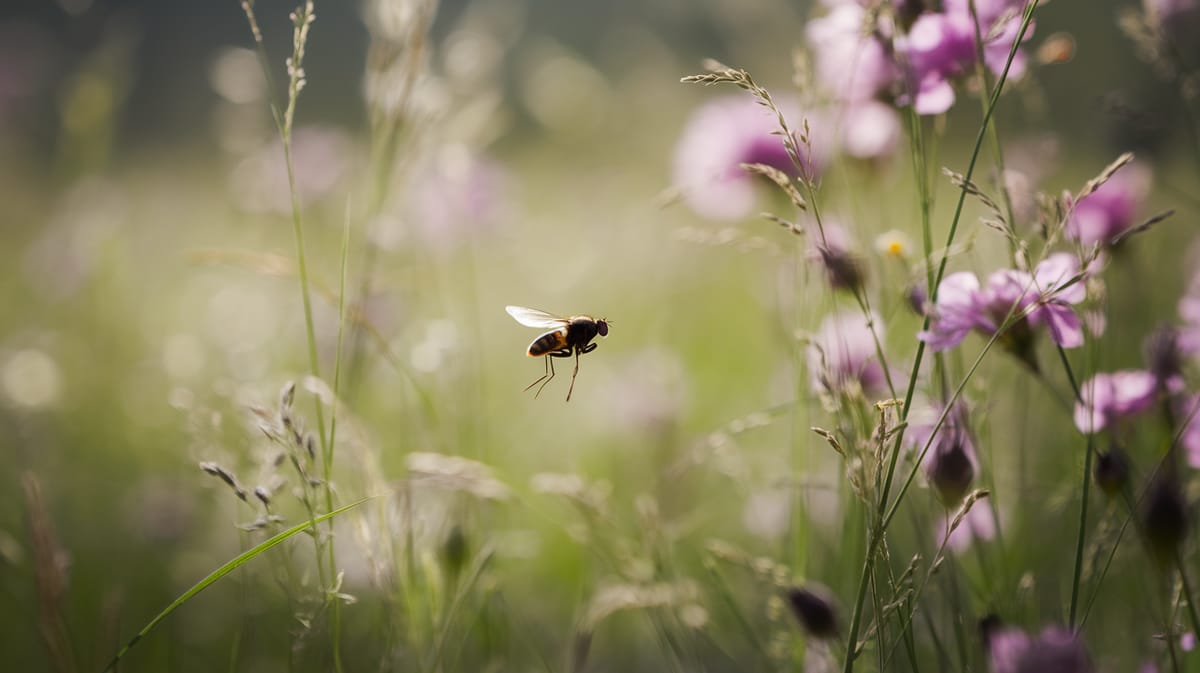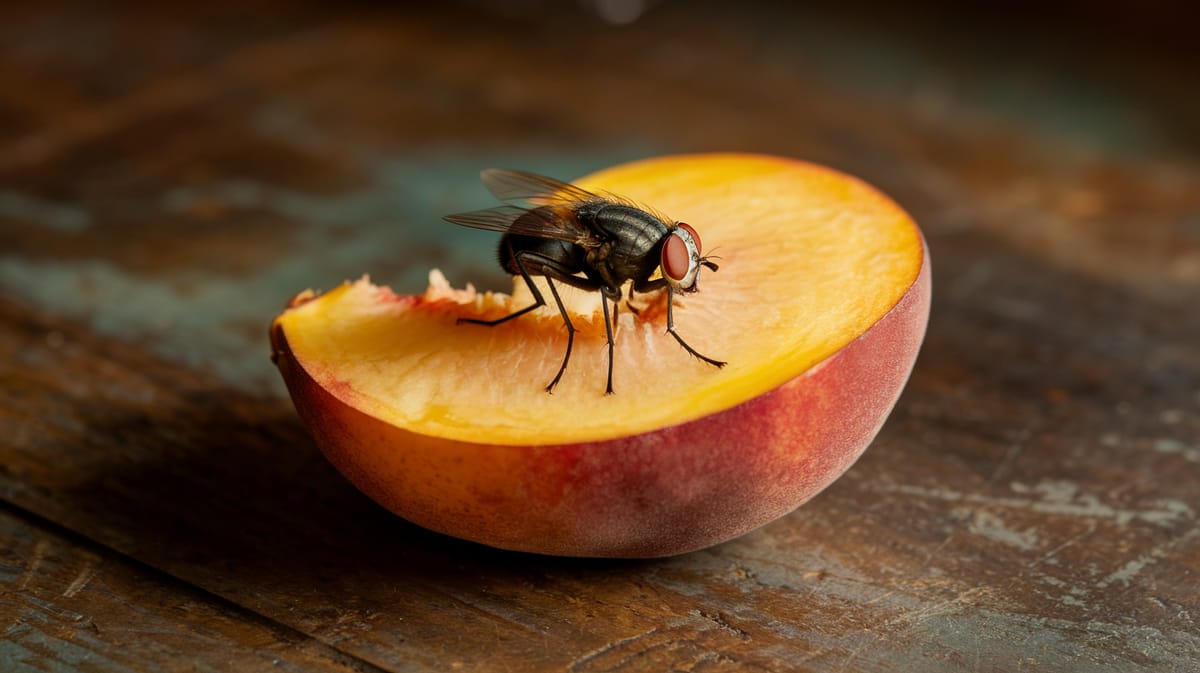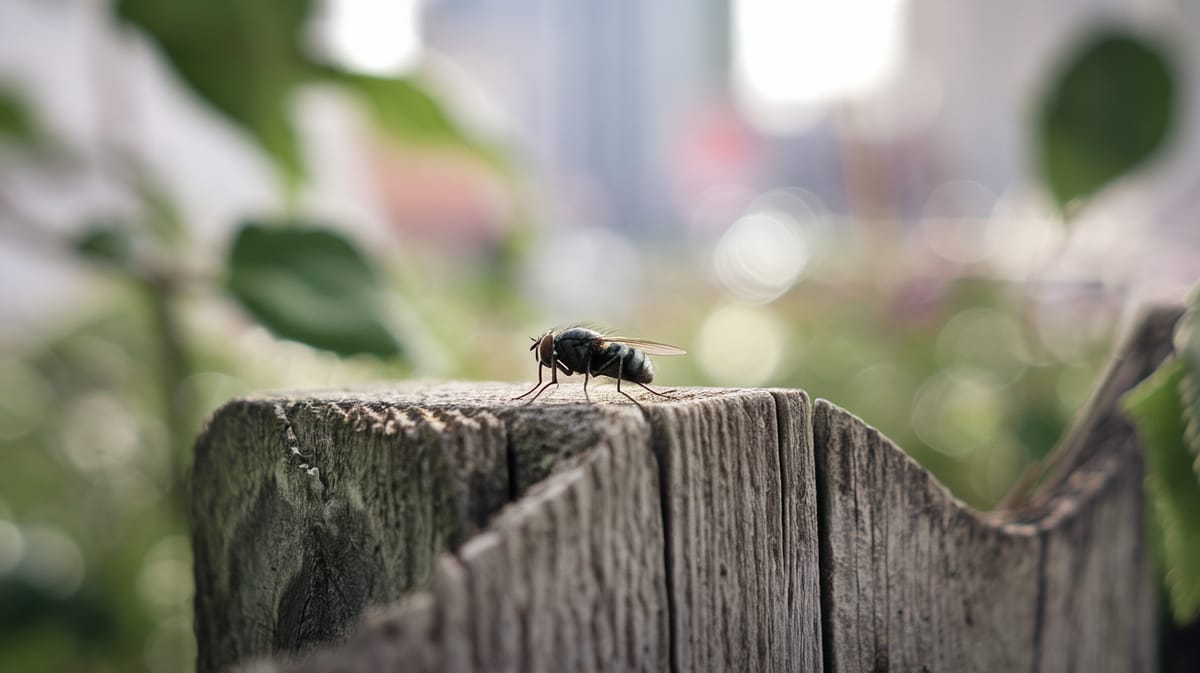Little House Fly
Effortlessly adapting to changing environments, the Little House Fly thrives in urban landscapes, playing a crucial role in decomposing organic waste. Its erratic flight pattern sets it apart from its larger relatives.

Key Insights at a Glance
Did You Know?
Taxonomy & Classification
Little House Flies are small decomposers with distinctive wing venation, enabling them to thrive in diverse environments. Let's understand the evolutionary journey and classification of these remarkable decomposers.
Global Presence
The Little House Fly, Fannia canicularis, is found across six continents, reflecting its adaptability to various climates and habitats.
Evolutionary Resilience
Originating millions of years ago, these flies have adapted successfully, surviving environmental changes and thriving in human-altered landscapes.
Lifecycle and Growth
A remarkable journey of transformation from Egg to Adult.
Egg
Eggs are tiny, white, and laid in clusters on decaying organic matter, serving as nourishment for the larvae.
Larva
The larvae, or maggots, feed voraciously on decomposing material, growing quickly and preparing for pupation.
Pupa
Pupae encase themselves in a hard shell, undergoing metamorphosis where tissues reorganize into adult structures.
Adult
Adults emerge, ready to mate and lay eggs, ensuring the continuation of the species.
Dietary Habits
A scavenger with opportunistic feeding habits, this insect thrives on decaying organic matter and waste from human and animal sources.
| DIET TYPE | DESCRIPTION |
|---|---|
| Primary Diet | Primarily feeds on animal waste, manure, and decaying organic materials found in human environments. |
| Secondary Diet | Consumes plant material, fermenting substances, and leftover human food when primary sources are scarce. |
| Occasional | Occasionally feeds on sugary substances, fruits, and nectar, especially when other food sources are unavailable. |

Behaviour and Adaptations
Discover the unique traits that make the Little House Fly a master of adaptation.
Rapid Reproduction
Quickly lays eggs in decaying matter, ensuring population growth.
Bacterial Tolerance
Thrives in unsanitary environments, resisting various pathogens.
Swift Evasion
Quick reflexes help avoid predators and obstacles easily.
Ecosystem Impact
Supporting ecological balance through the roles of the Little House Fly.
Organic Matter Decomposer
Breaks down organic waste, aiding nutrient recycling in the soil.
Pollination Assistant
Contributes to the pollination of various flowering plants.
Food Source
Serves as a crucial food source for birds and other insectivores.
Conservation Challenges
Understanding and addressing the major threats to Little House Fly populations.
Chemical Exposure
Pesticides disrupt breeding cycles and reduce fly populations significantly.
Habitat Loss
Urbanization reduces habitats essential for fly survival and reproduction.
Climate Change
Shifting climates alter fly breeding patterns and habitat suitability.
Frequently Asked Questions
How long do Little House Fly live?
Little House Flies typically live for about 15 to 30 days, depending on environmental conditions like temperature and availability of food sources. Their life cycle includes the stages of egg, larva, pupa, and adult.
What do Little House Fly eat?
Little House Flies primarily feed on decaying organic matter, such as garbage, animal waste, and rotting food. They are attracted to sugary substances and can often be found around compost piles and other decomposing materials.
Are Little House Fly poisonous?
Little House Flies are not poisonous, but they can carry and spread bacteria due to their feeding habits. They can potentially contaminate food and surfaces, leading to health risks if not managed properly.
Are Little House Fly endangered?
Little House Flies are not considered endangered. They are common in many environments around the world, thriving in areas with abundant food sources and suitable breeding conditions.
What do Little House Fly symbolize?
In various cultures, flies, including Little House Flies, often symbolize persistence, adaptability, or annoyance. While they lack significant symbolic meaning, their presence can sometimes be associated with uncleanliness due to their habitat preferences.
Do Little House Fly bite?
Little House Flies do not bite humans or animals. Unlike some other fly species, they lack the mouthparts required for biting. Instead, they feed by sponging up liquids and soft substances.
What color are Little House Fly?
Little House Flies are primarily grayish-black in color, with lighter stripes on their thorax. They have a somewhat dull appearance compared to other fly species.
Does a Little House Fly have wings?
Yes, Little House Flies have wings. These wings enable them to fly and are an essential part of their anatomy, allowing them to move quickly from place to place.
What does a Little House Fly look like?
Little House Flies are small, about 3 to 4 millimeters long, with a grayish-black body and lighter stripes on the thorax. They have red compound eyes and transparent wings, giving them a typical fly appearance.
Is a Little House Fly an insect?
Yes, a Little House Fly is an insect. It belongs to the order Diptera, characterized by having two wings, six legs, and segmented bodies. Insects in this order are commonly known as true flies.
Related Insects
Discover insects with similar characteristics to Little House Fly - including shared habitats, diets, and taxonomic classifications
Share this profile
Help others discover Little House Fly
